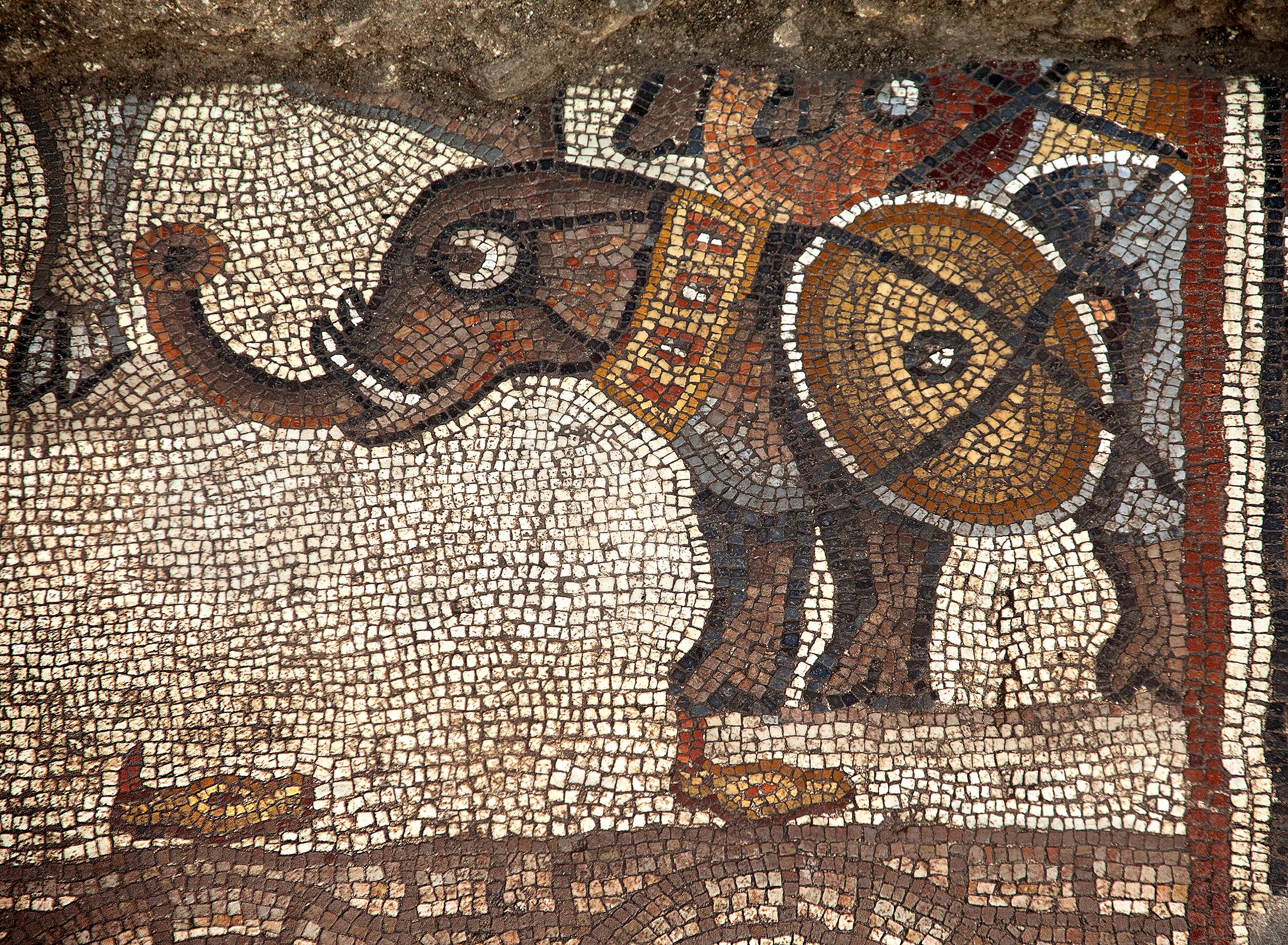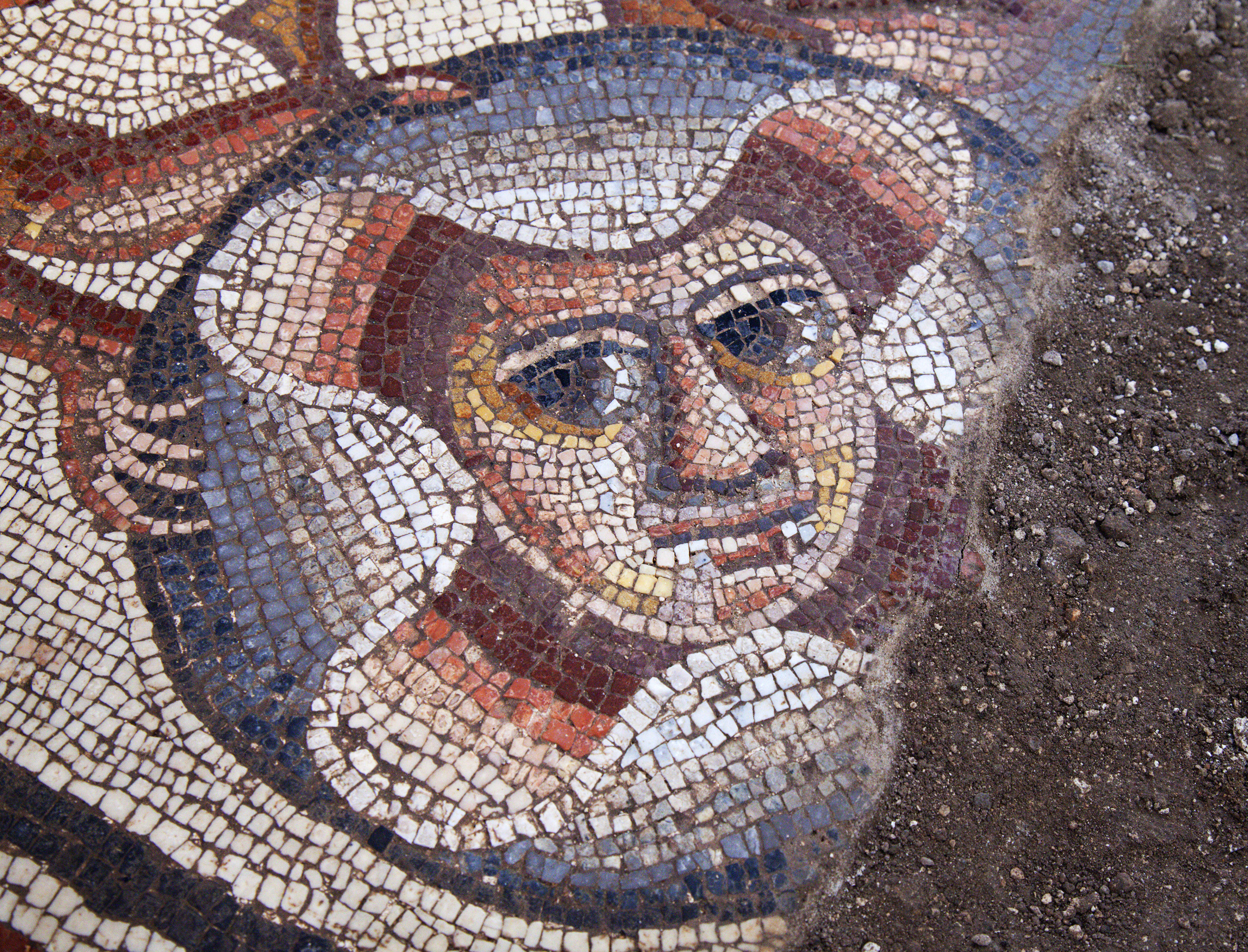5th-Century Mosaic Adorned with Elephants and Cupids

Stunning mosaics have turned up during an archaeological dig of a fifth-century synagogue in northern Israel.
Tiny earth-hued stones in the mosaics swirl to form images of women surrounded by cupids holding discs, mythological creatures, a rooster, expressive theater masks and symbols of Dionysus (Bacchus), the Greco-Roman god of wine. And painted ivy crawls up columns covered with plaster. These recent discoveries add context and scenes to previously uncovered mosaics and inscriptions on the same and adjacent panels.
"The images in these mosaics — as well as their high level of artistic quality — and the columns painted with vegetal motifs have never been found in any other synagogue," Jodi Magness, the director of the excavation project and professor of early Judaism at the University of North Carolina at Chapel Hill, said in a statement. "They are unique discoveries." [See Photos of the Colorful Mosaics from Israel]
Magness led the team that discovered the first mosaic at the excavation site, which featured the Bible's Samson, in 2012, and continued unearthing pieces each summer. The site is located in Huqoq, in the Galilee region of Israel. Magness said she expects to return to the site for another four to five years, until excavation is complete.
This summer's findings are "quite extraordinary panels," Magness told Live Science. "The mosaics were the paving of [the synagogue's] floor." The building measured about 66 feet long and 32 to 50 feet wide (20 by 10-15 meters). "The floors are in a relatively good state of preservation, but the building is buried and ruined," she said.
Secular mosaics
Elephant mosaics found in an earlier excavation of different sections of the same and adjacent panels hinted at the synagogue's less religious take on décor. The armored pachyderms "indicate that the scene depicted in the elephant mosaic is not a biblical story," Magness said, because there are no stories in the Hebrew Bible that involve elephants. The elephant panel measures about 11.5 feet (3.5 m) from top to bottom and fits on a panel set in an aisle about just as wide.
Get the world’s most fascinating discoveries delivered straight to your inbox.
The elephants were featured on a panel discovered last summer that may have depicted a Jewish legend about a meeting between Alexander the Great and the Jewish high priest. "The Greek armies after the time of Alexander the Great and then later the Romans did use elephants from their campaign," she said, so though elephants likely never roamed Israel, they "were certainly known from their use in the Greek and Roman armies."
However, Magness said she didn't think the artists who assembled the mosaic ever saw an elephant, "because they look like cartoons."
The synagogue does feature some biblical scenes, including the first image found at the site, of the biblical hero Samson, who is likely most remembered for his extraordinary strength and susceptibility to female persuasion. The synagogue's mosaic features a scene of Samson from the biblical Book of Judges in which he sets foxes on fire and sends them on a revenge-seeking quest to burn the land of the Philistines, Magness said.
"There is only one other ancient synagogue in Israel that has a scene depicting Samson," Magness said. That synagogue, known as Wadi Hamam, is located 5 miles south of the synagogue with the newfound mosaics. The mosaics at Wadi Hamam are poorly preserved, unlike the ones Magness uncovered, which she said are "truly works of art."
The mosaics at the Huqoq synagogue date to the synagogue's construction in the early fifth century, or possibly slightly later. To try to figure out why the artists chose to depict nonbiblical scenes, scholars can look at contemporary ancient sources, like writings left by rabbis. "What did they have to say about Samson?" Magness mused.
Magness said that it's possible each panel was commissioned by a different donor, since a single underlying theme among the images isn't yet evident. "We may never know — we can speculate, but we may never know," she said.
Elizabeth Goldbaum is on Twitter. Follow Live Science @livescience, Facebook & Google+. Original article on Live Science



